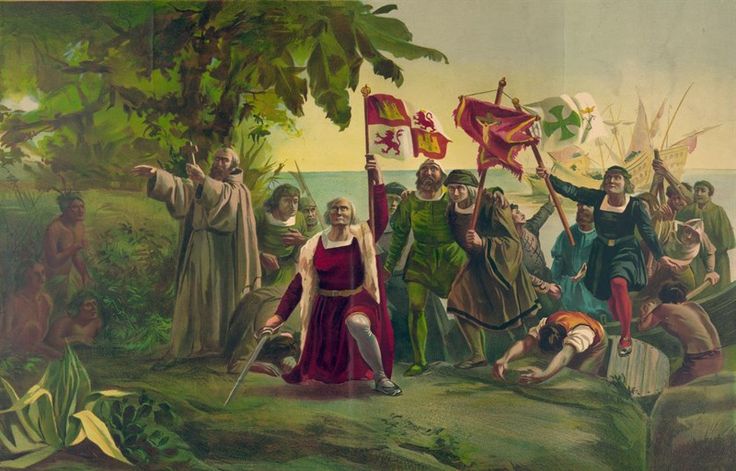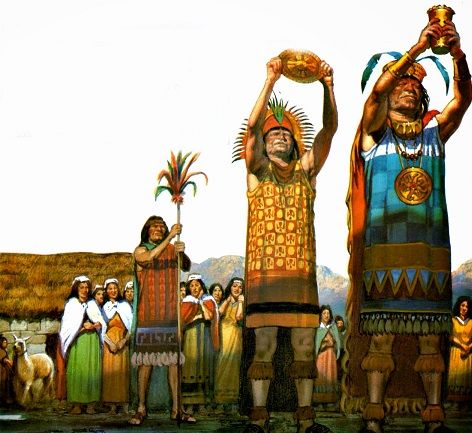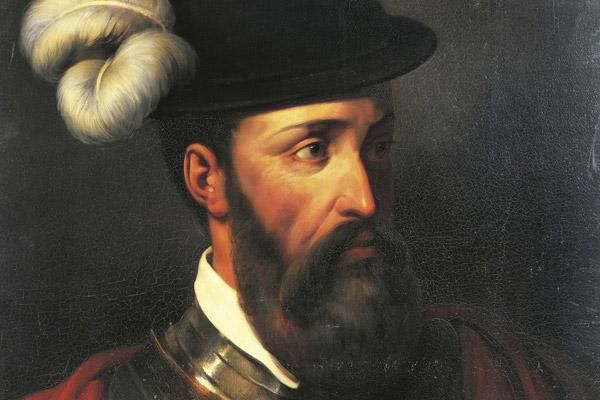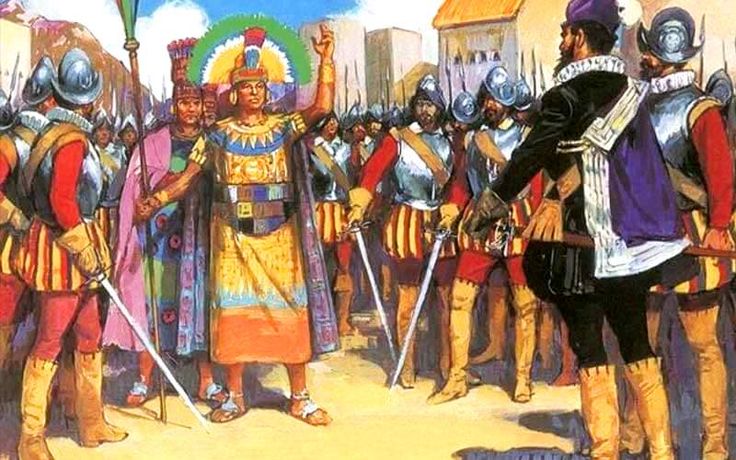The Spanish Conquest in Peru is a gripping tale of adventure and the clash of cultures that changed history. Picture the amazing Inca Empire, with its beautiful cities and rich traditions. Then, a small group of European explorers led by Spanish conquistador Francisco Pizarro eager to find gold and precious metals to make their mark.
What happened next was a remarkable tale of bravery, strength, and change. This meeting of two worlds began an important chapter in Peru’s history, creating a unique legacy of old and new that still resonates today. The Spanish Conquest in Peru was around 1532 A.D, however, the discovery of the new continent led to the conquest of the Americas.
Christopher Columbus and the Discovery of America
Christopher Columbus is a name that inspires curiosity and wonder, his story involves ships, exploration, and the exciting Age of Discovery. From a young age, he loved the sea and dreamed of finding new paths to the treasures of Asia.
At that time, the trade routes to Asia were long and risky. Columbus had an adventurous thought: what if he could reach Asia by sailing west across the Atlantic Ocean? In 1492, Columbus, with great effort, won the support of the Spanish crown for his exciting journey.
He embarked on a voyage across uncharted waters with three ships: the Niña, the Pinta, and the Santa María. After several weeks at sea, on October 12, 1492, Columbus and his crew were thrilled to see land. They believed they had arrived in the Indies or Asia but were delighted to find the stunning Caribbean instead.

This moment was a great start for European exploration in the Americas because it paved the way for discoveries and connections. Although Columbus did not find a route to Asia, his voyages began a new era of exploration and connection between Europe and the Americas.
His journeys had a significant impact, leading to the exchange of goods, ideas, and cultures that enriched both worlds. However, these changes also brought challenges for the indigenous peoples of the Americas. Columbus left behind a complex legacy that captures both the positive and negative aspects of this time in history. His travels significantly affected history and the modern world up to the present day.
Incas in Columbus’s time
We are fortunate to have enough knowledge about the Incas. Historians put considerable effort into compiling testimonials, myths, and daily life facts. Chroniclers and archaeologists have increased our knowledge of the Inca Empire before European settlers arrived in the Americas.
A few of the legends correspond to the period when Columbus first arrived in America. The Incas were not in contact with the earliest Spanish settlers, as is commonly known, and preserved their culture up until Francisco Pizarro’s conquistadors arrived.

Inca Garcilaso de la Vega, a famous Peruvian “mestizo” writer, said Huayna Cápac ruled the Inca Empire, or Tahuantinsuyo, at Columbus’s discovery of America. The well-known Inca emperors Huáscar and Atahualpa were descended from Huayna Cápac.
Some suggest that the famed Túpac Yupanqui, son of Pachacútec, led the empire then. Before Pizarro arrived in 1524, the Spanish General Pascual de Andagoya started campaigns to conquer Peru, a task that Francisco Pizarro would finish.
Inca Civil War
Atahualpa was the last and 13th Inca emperor. Atahualpa spent over 10 years in Quito with his father, Huayna Cápac, and his mother, the Quito princess Pacha. When Huáscar became the Inca emperor, he felt uneasy about Atahualpa leading most of the army, to address this, he kindly asked Atahualpa to come to Cusco.
He sent thoughtful presents and the embalmed body of Huayna Cápac instead of going to the ceremony honoring their father. Huáscar was troubled by Atahualpa’s absence at this critical time, so he injured Atahualpa’s representatives out of rage. Atahualpa was driven to react as a result of these actions, which ultimately led to a civil war.

The first fights were won by Huáscar, who also succeeded in putting Atahualpa in jail. But Atahualpa managed to get away, reassemble his army, and defeat Huáscar in the climactic Quipaypampa fight. After being taken prisoner, Huáscar saw his entire family executed.
After a while, Atahualpa, who was also a captive of the Spanish, gave the order to have his brother Huáscar executed. We can say the Spaniards preyed on the rift between these two brothers in the Inca Empire’s power.
Pizarro and Atahualpa clash
On November 15, 1532, General Francisco Pizarro sought new lands, power, and gold. for the sake of his name and his homeland. With a few Spanish forces, including Diego de Almagro, he landed on the coast of South America, in Peru. Pizarro was determined to defeat the Inca Empire and steal its wealth for Spain.
As we said before, Atahualpa was the Inca emperor after defeating his brother in a ferocious battle. Actually, he was preparing for his triumphal entrance in Cusco, the capital of the empire. Since Atahualpa did not know the Spanish conquistadors’ intentions, he welcomed them to his country. In Cajamarca, where Pizarro had made camp, he would eventually meet Pizarro and his troops.

About 30,000 soldiers from Atahualpa’s army waited outside Cajamarca for the Spaniards. Francisco Pizarro, his brother Hernando, and Hernando de Soto sent an expedition to Atahualpa’s camp. On behalf of Pizarro, they asked to see the Inca, Atahualpa agreed, underestimating the power of the Spaniards, and the meeting was set for November 16th, the next day.
The meeting was on the Cajamarca main square, where the Spaniards saw the Inca emperor coming along with his colorful crew. What the Incas did not know was that the Spaniards had set an ambush for them, as the priest was the only person who welcomed the Inca emperor. He was holding a Bible and a cross and tried to talk to the Inca monarch about the importance of knowing God and accepting King Charles V as his king.
Pizarro Treason and the End of the Empire
Atahualpa asked for the Bible, as he had never seen anything similar to a book before. After flipping through it and thinking it was of no practical use, he threw the Bible to the ground. This action angered the priest, who insulted Atahualpa. Later, the Spaniards came and took Atahualpa prisoner, dragging him into the city’s palace.
A few months after capturing the Inca monarch, he made Pizarro an offer: fill a room with gold and silver, and he would be freed. Pizarro accepted. The book “Oro del Perú: Del Cuarto del rescate al mito de El Dorado” states that the room, measuring 6.00 x 6.00 x 2.30 meters, had a volume of 82 cubic meters, up to his raised middle finger.

That’s a lot of space! Pizarro could consequently anticipate receiving an astounding 164 tons of silver and nearly 82 tons of gold. When Atahualpa began to worry about Pizarro’s intentions, he had already paid almost half of the amount. He thought Pizarro might turn on him, so Atahualpa decided to hide the remaining funds to protect himself, and their exact whereabouts are still a mystery.
He also stopped making payments since he started to think the room would never be completely full. Cajamarca locals claimed that it was filled during the day, and the Spaniards emptied it at night. Finally, Pizarro betrayed Atahualpa. He was guilty of idolatry and rebellion, and, despite a large ransom, he was sentenced to be burned to death.

Atahualpa consented to be baptized and adopted the Christian name Francisco de Atahualpa to avoid being burned at the stake, however, on July 26, 1533, he was put to death by garrote. When he passed away, the Inca Empire finally fell. Years later, the viceroyalty of Peru, a political and administrative colony, was founded by the Spanish crown.
After that, the Spaniards put Manco Inca Yupanqui, also known as Manco Inca, as a “puppet ruler.” Manco Inca thought the Spaniards were “saviors.” So, he obeyed them. Later, he rebelled. His son, Tupac Amaru, continued the fight until Peru’s independence.
This history shows the need for a fairer, more inclusive future. Yet, our traditions, beliefs, food, and architecture still reflect a mix of Spanish and Andean cultures. This makes our country diverse and unique.
Viagens Machu Picchu will be more than glad if you travel with us to our beloved country. Our more than 100,000 visitors can confirm that we are a reputable travel agency. Peru and all its history are waiting for you!
Viagens Machu Picchu, journeys that inspire, moments that last.
| Spanish > Viagens Machu Picchu |
| English >Viagens Machu Picchu |
| Portuguese > Viagens Machu Picchu |

